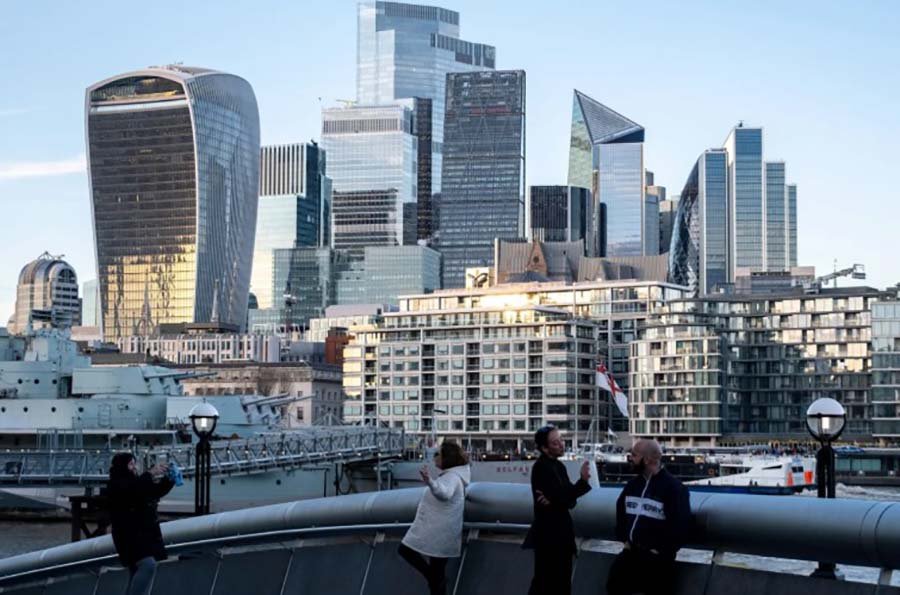читайте также
 New Rules for Temporary and Permanent Residence in Armenia: What Will Change in 2026
New Rules for Temporary and Permanent Residence in Armenia: What Will Change in 2026
 Thousands of Hotel Rooms Remain Empty Across the UK This Christmas — Despite Record Demand
Thousands of Hotel Rooms Remain Empty Across the UK This Christmas — Despite Record Demand
 Greece Sets Air Traffic Record: October 2025 Marks a New Peak for Tourism and Aviation
Greece Sets Air Traffic Record: October 2025 Marks a New Peak for Tourism and Aviation
 Portrait of the Russian Tourist 2025: New Challenges for Resorts and Hotels
Portrait of the Russian Tourist 2025: New Challenges for Resorts and Hotels
 Spain’s Real Estate: Record Prices and Falling Yields
Spain’s Real Estate: Record Prices and Falling Yields
 Fuel crisis at Seattle Airport: the Olympic Pipeline outage has disrupted supplies
Fuel crisis at Seattle Airport: the Olympic Pipeline outage has disrupted supplies
Вusiness / Real Estate / Investments / Analytics / News / Reviews / United Kingdom / Real Estate Britain / Japan / USA 02.10.2025
London Offices Attract Investors from Japan and the U.S.

Photo: bwbx.io
London’s office market has once again attracted the attention of international investors. Limited supply of new space and persistent demand from major companies have strengthened interest in the city from both Asian and American capital. For some, it has become an alternative to the unstable U.S. market; for others, an opportunity to profit from the shortage of modern offices.
Capital from Tokyo
Japanese developers are increasing their investments in UK real estate, reports Bloomberg. Mitsubishi Estate has launched construction of an £800 million office complex on London’s South Bank. Senior Executive Officer and Head of the International Division Masa Iwase said the project began after long delays caused by urban planning approvals. He noted that the limited volume of new office space gives London an advantage over New York, where supply kept expanding even after the pandemic.
Head of Mitsubishi Estate London Shinichi Kagitomi added that the city’s appeal is reinforced by its ability to attract global talent. The market highlights an imbalance: in recent years, office construction in the UK has slowed due to political uncertainty, rising interest rates, and more expensive building materials, while demand for premium space in central districts has only intensified. The shortage of modern offices has also been flagged by major players, including BlackRock’s CEO Larry Fink.
In Mitsubishi Estate’s capital allocation, 51% goes to the U.S., 22% to Europe, and 27% to Asia. Among new projects is Mitsui Fudosan’s £1.1 billion investment in expanding the British Library, in partnership with developer Stanhope, with completion planned by 2032.
Experts note that Japan’s long economic stagnation traditionally drives developers to seek opportunities abroad. However, the weaker yen could hinder further growth in investments. Stephen Down, Head of Central London and International Investments at Savills, stressed that currency factors could limit the scale of new inflows.
UK Investment Minister Jason Stockwood, speaking at the groundbreaking ceremony of 72 Upper Ground, called Mitsubishi Estate’s project “a powerful signal of confidence in the country”. He added that the new government aims to systematically cut bureaucratic barriers to make it easier for international companies to operate.
According to MSCI Real Capital Analytics, Japanese investors have directed more than £1.6 billion into UK real estate since 2023 through the first half of 2025. That figure is 50% higher than in 2015–2019, but it still lags behind U.S. investments, which reached nearly £7 billion in just the first six months of 2025.
American Funds
Conversant Capital from New Jersey signed an agreement with Castleforge to create a joint venture worth over £1 billion for investing in London offices. In the first stage, the company committed £150 million to the Castleforge Partners V fund. Two deals have already been agreed: refinancing a building in the insurance district and purchasing a stake in the 75 London Wall redevelopment, which is transforming the former Deutsche Bank headquarters.
The return of U.S. capital is closely tied to conditions in the domestic market. After the pandemic, office vacancy in several key American cities exceeded 20%, as overbuilding coincided with a mass shift to remote work. This deterred many investors and lenders, who avoided office deals even in countries that experienced a much lighter post-crisis blow.
London also saw office vacancies double, but the absence of large-scale new construction created a tight shortage of modern stock. As a result, rents in central districts began rising sharply, once again drawing U.S. funds. According to JLL, U.S. investments in London offices increased by 33% in the first half of 2025 compared to 2024.
Among the most active players are Ares Management and Blackstone, once a long-time skeptic of the office market. Thomas Mundy, Head of Capital Markets Research EMEA at JLL, noted that central London has been seeing double-digit rental growth, in some places climbing into the mid-teens. Michael Simanovsky, Managing Partner of Conversant Capital, emphasized that the company invests in sectors emerging from crisis. Castleforge co-founder Michael Kovacs said the fund deliberately engaged with a strong tenant market at a time when many competitors were pulling back.
Overall Dynamics
London’s office market is gradually emerging from a period of instability. Demand for modern space is growing, especially in central districts where new project supply is limited. Companies adopting hybrid work models are increasingly focused on upgrading and expanding their offices, which supports rising prices.
Shaftesbury Capital, the largest property owner in the West End, recorded a 2.9% increase in estimated rental values in the first half of 2025 and a decline in vacancy from 3.9% to 3.5%. The company also sold part of its stake in Covent Garden to Norway’s sovereign wealth fund, reducing its debt burden.
According to Cushman & Wakefield, most tenants who relocated in central districts in 2024 increased their space. Knight Frank analysts highlight that under hybrid work, companies are less focused on downsizing and more on quality upgrades and expansion. Modern, internationally certified buildings are especially in demand, while outdated properties are losing ground.
Statistics confirm a turning point: UK office vacancy fell to 8.6% in March 2025 from 8.7% at the end of 2024 — the first drop since the pandemic. In premium West End districts, rents reached £160 per square foot, up 21.7% year-on-year. Interest is also rising in Canary Wharf, where major corporations are expanding, and forecasts from CBRE and Great Portland Estates point to further growth of up to 10% within a year.
At the same time, experts warn that optimistic expectations may not fully materialize. The country faces a challenging economic environment. High interest rates, rising debt servicing costs, and slowing consumer activity could affect tenants’ and investors’ decisions. Additional risks include political uncertainty and continued pressure on construction firms from higher material and labor costs. All of this could alter the outlook and limit new capital inflows.





